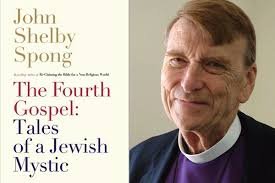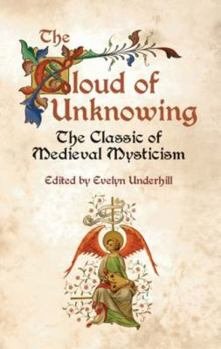11.3 - Certainty, Uncertainty and the Eternal Moment
Click here to Subscribe and receive a new copy in your inbox each week.
You can listen to the audio version by clicking the > button below.
Two philosophers walked into a bar. After ordering a couple of ouzos, Plato turned to Socrates and asked, "What is the beginning of knowledge?” Socrates replied, "Is that a duck under your arm?” To which Plato responded, “Seriously, Soc, this is not a joke. Where does it all start?” Socrates ordered another, downed it, and said, "The beginning of knowledge is the definition of terms.”
As I reread this blog segment, I was reminded of the quote from Socrates. I use terms like "mind" and "consciousness" as if I fully understand them. So, let's do a quick Google search to be sure: “The mind refers to the collection of mental processes that control behavior, while consciousness encompasses your thoughts, feelings, surroundings, and memories. It's a subjective experience unique to each person, enabling you to introspect and reflect on yourself.”
So, with that under our arm, let's jump into today's segment.
The Dilemma of Lazarus: Dead or Asleep?
11:11 After saying this, he told them, “Our friend Lazarus has fallen asleep, but I am going there to awaken him.” 12 The disciples said to him, “Lord, if he has fallen asleep, he will be all right.” 13 Jesus, however, had been speaking about his death, but they thought that he was referring merely to sleep. 14 Then Jesus told them plainly, “Lazarus is dead. 15 For your sake I am glad I was not there, so that you may believe. But let us go to him.” 16 Thomas, who was called the Twin, said to his fellow disciples, “Let us also go, that we may die with him.”
With all due respect, Sir, which is it? Is he asleep, or is he dead? You now say he is dead, but earlier, you said he would not die and that he was sleeping. So, is Lazarus dead dead? I have agonized over this contradiction for days and am still deep in the Valley of uncertainty.
Examining the resource material on this question reveals several eloquent yet contradictory explanations. Some say that Jesus was mistaken earlier, while others say he spoke in eternal or spiritual terms where physical death is called sleep, as Paul said in his letter to the Thessalonians. ("those who sleep in death”)
Shelby Spong says the passage is a parable, expanding the earlier story about the rich man Lazarus and his desire to return from death to warn his brothers. In that parable, Lazarus’ brothers represent Israel, and Jesus has Abraham say, “If they do not hear Moses and the Prophets, neither will they be convinced if someone should rise from the dead.” For Spong, John is telling us there will always be those who do not believe.
Which version is correct? I can't be sure, and that's the challenge because I'm seeking insights to share with others: my children, grandchildren, and their children. Instead of contradictions, I want to provide them with truths that could enhance their lives and spark their curiosity about eternal concepts.
The Truth of Uncertainty
For now, my only insight is the often unrecognized truth of uncertainty. We know, but don't like to acknowledge, that we live in an uncertain universe, each with an uncertain number of days. Yet here we are, with a brain that wants answers and a psyche that craves what it cannot have: certainty. "I don't want any surprises!” How often during my career did I hear that from clients? Certainty gives us a sense of control; control gives us a sense of safety/security.
Both certainty and control are imaginary or, at best, temporary. If you've heard the doctor say, "There are no more options," you know what I mean. This sudden uncertainty shock can feel like the ground has been pulled from under you, and you're waiting to drop - with no control, no security.
“The more you embrace being uncertain and not knowing, the more comfortable you will feel with knowing what you do not know.”
Embracing Discomfort for Growth
To my grandchildren and their children: learn to be comfortable with uncertainty—to live as a mystery within a mystery. But how do we embrace being uncomfortable and uncertain? We should anticipate and welcome this discomfort as a sign of growth, much like the soreness after a good workout. When anxiety increases during an uncertain moment, pause, smile, breathe through it, and remind yourself, "Here I grow again.”
Conversely, I've noticed that those who are always certain can become closed-minded, overconfident, and intolerant. Nobody has time for that.
As a side note, my desire to understand comes from the misguided notion that understanding leads to experience—that knowing about equals knowing. The Cloud of Unknowing warns that the primary way to reach God is through an act of pure, unconditional love, even in the face of unknowing: "Do not seek to understand, but rather to love,” says the unknown author. This medieval admonition is not an either-or but a matter of priority: “Seek ye first to love, and understanding will follow.”
Let's get back to our story.
The Eternal “Now”: Jesus’ Perspective on Time
17 When Jesus arrived, he found that Lazarus had already been in the tomb four days. 18 Now Bethany was near Jerusalem, some two miles away, 19 and many of the Jews had come to Martha and Mary to console them about their brother.*
(*) The “sitting shiva " custom is a time for spiritual and emotional healing, during which mourners join together. A person sits shiva for a parent, spouse, sibling, or child.
20 When Martha heard that Jesus was coming, she went and met him, while Mary stayed at home. 21 Martha said to Jesus, “Lord, if you had been here, my brother would not have died. 22 But even now I know that God will give you whatever you ask of him.” 23 Jesus said to her, “Your brother will rise again.” 24 Martha said to him, “I know that he will rise again in the resurrection on the last day.” 25 Jesus said to her, “I am the resurrection and the life. Those who believe in me, even though they die, will live, 26 and everyone who lives and believes in me will never die. Do you believe this?” 27 She said to him, “Yes, Lord, I believe that you are the Messiah, the Son of God, the one coming into the world.”
I appreciate Martha's perspective on how to perceive time. For her and many of us, time in our physical lives has three dimensions: the past, present, and future. If you had been here then (past), my brother would be alive now (present) and will rise again on the last day (future). She was comfortable with her religious and theological frame of reference, where events occurred in the past, are occurring now, and will occur in the future. Jesus, however, quickly reframes time as he understands it: the only time is now. Not "I will be resurrected; I am the resurrection.”
The Freedom of Eternal Life
The past is memory, the future is fantasy, and only the present holds "life." Countless philosophers have told us that the present moment is the only time that truly exists. We can only genuinely experience and interact with the world in the “now." This truth was so deeply ingrained in Jesus’ consciousness that he could declare, "I am the way. I am the truth. I am the life.” He wants us to know this truth and experience its freedom daily.
Just imagine: We are not defined by our past nor bound to a predetermined future. Even though they may infuse our dreams and provoke minutes of anxiety and insomnia, the past and future do not constitute reality. Our consciousness in the present moment determines reality – now. There is a code written within our being that may use events from the past and opportunities in the future, but it is constantly unfolding in the “now." This is the essence of "eternal life.” The eternal is always now.
A Practice for the Present: Here, Now, Me
To my grandchildren and their children: To grasp this concept, I created a simple mantra to help in the baking process of my consciousness. It goes like this: “Here—no other place; Now—no other time; Me—no other one.” As I repeat this, often timing it with my breath, I try to be grateful for where I am, when I am, and who I am. This helps unhinge the bungee cord that would like to pull me into the past or future or the desire to be somebody else.
This simple exercise will also help you understand what you’ve been “telling yourself about yourself.” Casting aside those delusions will give you a clearer vision of yourself. Learn to see that person in detail within your consciousness, and watch what happens. Real growth begins when we can be honest with ourselves about ourselves.
Key Points and Highlights
Faith Amid Uncertainty: The ambiguity in Jesus’ statements highlights the tension between literal and spiritual truths.
Certainty vs. Uncertainty: Humans crave certainty because it offers a sense of control and security; however, this is often an illusion. Life’s unpredictable nature challenges us to accept uncertainty, which can foster personal and spiritual growth. Embracing discomfort, akin to post-workout soreness, symbolizes growth and change.
The Eternal “Now”: Martha perceives time as consisting of the past, present, and future, while Jesus reframes time as eternal and ever-present, emphasizing the importance of living fully in the now, as it is the only time that truly exists.
Redefining Reality: Our reality is shaped by our engagement with the present, not our dwelling on the past or worrying about the future.
A mantra for mindfulness: “Here—no other place; Now—no other time; Me—no other one” helps cultivate gratitude and presence. Concentrating on the present allows us to recognize and let go of delusions, gaining clarity about who we indeed are.







